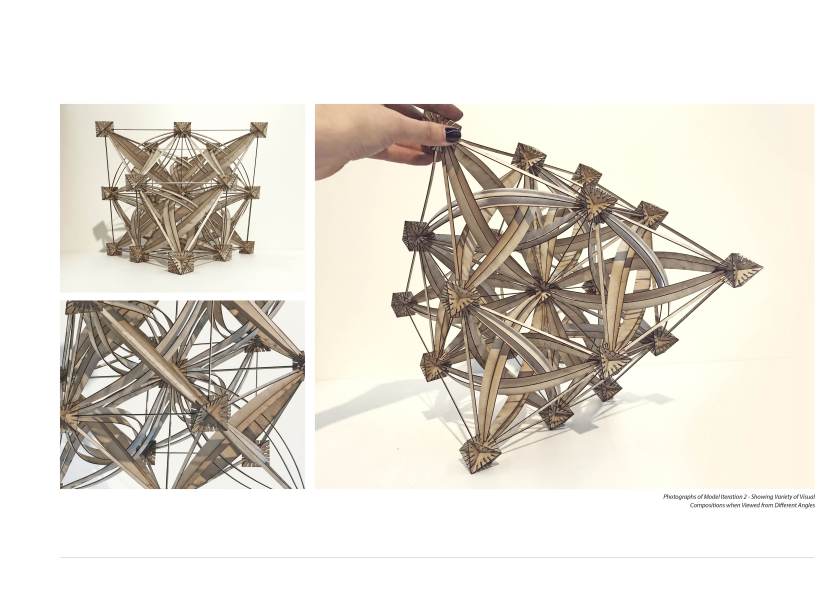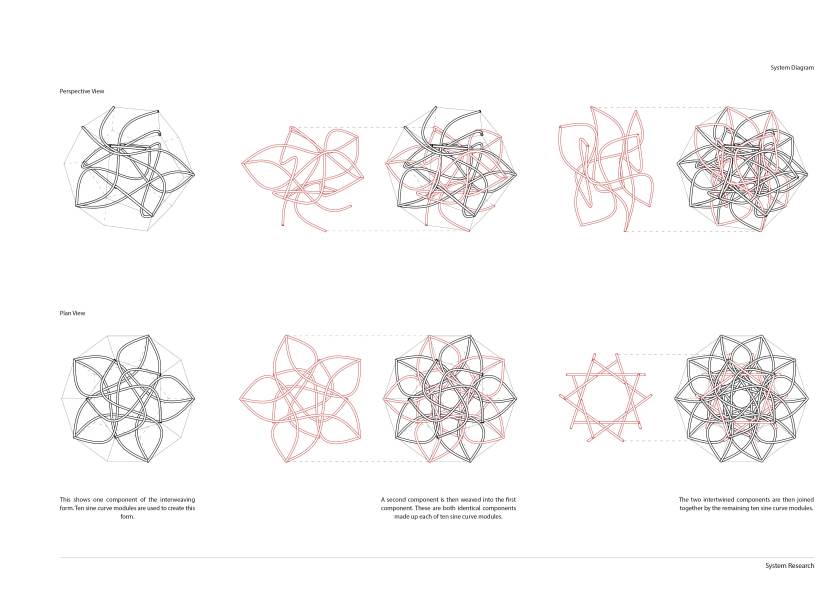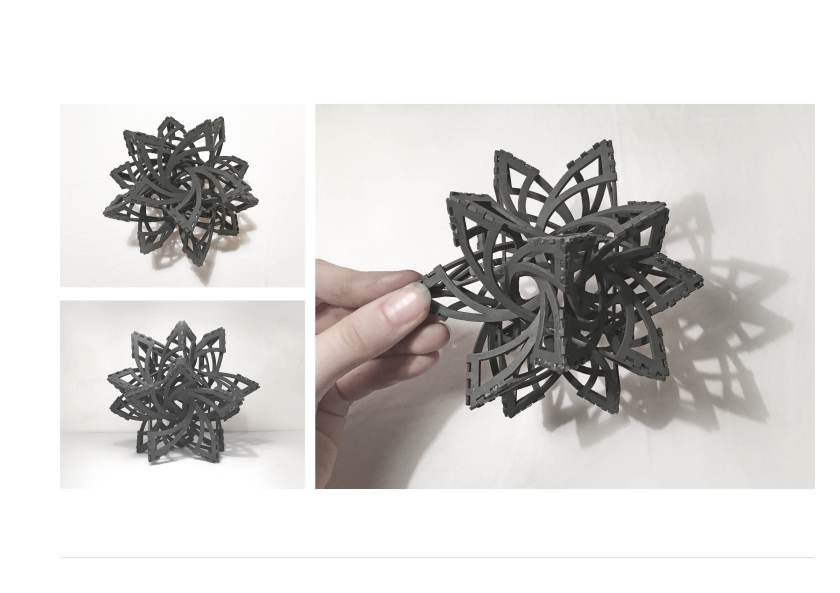
INSTALLATION SUBMISSION TO BURNING MAN 2016 – ‘Entwine’
Entwine is a timber frame structure which has been developed through rigorous physical and digital testing to ensure a safe climbing frame for all to enjoy. When exploring Entwine, the vast expanse of the playa is framed through beautiful intertwining curved plywood beams. Burners can view the event from glorious vantage points nestled amidst multiple communal spaces that encourage interaction and play.
The structure predominantly consists of strips of curved plywood which have been connected together using pioneering construction techniques, specifically the utilisation of conflicting forces, similar to those apparent in ‘Tensegrital’ design. Drawing inspiration from Leonardo Da Vinci and his various experimentations with physical form, ‘Entwine’ is a marvel of geometry. The piece is formed from an arrangement of 19 octahedral components, each consisting of six beams, which are paired and positioned upon one of three axis. These three elements represent the unity of man, nature and the universe that surrounds us.



Each modular component is tessellated to form an octahedral space frame structure. The rigidity resulting from this tessellation is in direct contrast to the curving structural beams which exude an organic aesthetic. As Burners view Entwine from different aspects, a remarkable array of different patterns and forms are revealed, many bearing resemblance to sacred geometry, specifically the Flower of Life, which was a significant study within Leonardo Da Vinci’s work.

Entwine is unorthodox in its composition, and this is a contributing factor to what makes it so unique: Each module is constructed through tensioning layers of ¼ inch thick plywood, which are then mechanically fixed together when a desired radius has been reached. By laminating the plywood in this manner, each component retains its curvature but remains in compression. These conflicting forces are integral to the design of Entwine: Each octahedral module is constructed from these compressed plywood elements, and are held together with tensioning ropes creating a structure of isolated components in compression within a net of continuous tension.
 The form of the structure is based on the octahedron, which is a Platonic solid composed of eight equilateral triangles; four of which meet at each vertex. One of the eight triangles acts as a base for the structure. This results in one edge creating a small cantilever, whilst the counter edge can be anchored to the ground. As previously studied by Buckminster Fuller, the geometry of an octahedron is particularly good at forming space frames with a strong cantilevers.
The form of the structure is based on the octahedron, which is a Platonic solid composed of eight equilateral triangles; four of which meet at each vertex. One of the eight triangles acts as a base for the structure. This results in one edge creating a small cantilever, whilst the counter edge can be anchored to the ground. As previously studied by Buckminster Fuller, the geometry of an octahedron is particularly good at forming space frames with a strong cantilevers.


The participatory aspect of the installation voids the role of the ‘spectator’ and creates more active engagement. In many of Leonardo Da Vinci’s paintings, his subjects are framed by surreal, dreamlike landscapes. This is reflected within Entwine: As Burners become part of the installation, they are framed by the awe inspiring backdrop of Black Rock Desert: In many ways Entwine becomes the artist, the playa the canvas, and Burners the subjects.
“the artist is not a special sort of person, but every person is a special sort of artist.”
This is not only true in the sense of physical involvement but during the construction the ‘spectator’ becomes involved in making strategic decisions in the realisation of the work of art. The development, design and construction of the project embodies the principles of self-reliance and self-expression, whilst a proposal that is safe, interactive and beautiful will be gifted to the community at Burning Man.
Entwine’s curving form will be illuminated using LED spot lights to enhance the organic patterning existent within the structure. This allows the full form of the structure to be fully visible.






























